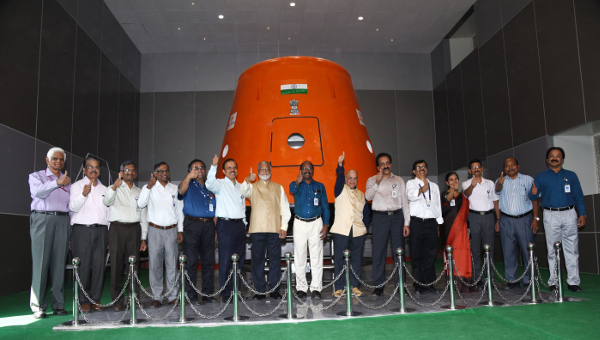India’s human space flight rocket will have multiple redundancies/backup systems as a matter of safety and the necessary hardware for building the rocket are coming in, said a senior official.
“The GSLV (Geosynchronous Satellite Launch Vehicle) that will be used for the Gaganyaan or the human space flight mission will be built with four redundancies (backup systems) for critical functions as a safety measure,” S. Somanath, Director, Vikram Sarabhai Space Centre (VSSC) told IANS.
The VSSC is part of Indian Space Research Organisation (ISRO) and based in Thiruvananthapuram in Kerala.
For instance, there will be multiple sensors for a particular function so that if one fails the other will be functional, a former ISRO official told IANS.
The Indian space agency has said the parachute systems are configured with redundancy.
The avionics for Crew Escape System are configured as an independent system including instrumentation system and sequencing system, ISRO said.
According to Somanath, no major design changes were made to the GSLV Mk-III rocket that will carry three Indian astronauts to space.
“We have just modified the design slightly as per the need,” Somanath said.
The electronics will be the major cost component in the rocket.
India plans to send three astronauts to space to be in orbit for about a week.
The first unmanned test flight of GSLV, as part of the country’s human space mission Gaganyaan, is expected to happen in 2021.
Two unmanned GSLV rockets will the tested before the actual human flight can happen.
ISRO Chairman K. Sivan had earlier said that the “design and engineering of the launch vehicle and orbital module system for India’s human space flight has been completed. A series of tests have to be competed to validate the design and engineering of the systems in 2020”.
According to ISRO, the facilities required for carrying out the preparation and check-out of orbital module have been identified and actions taken for the realisation of various systems and equipment.
A full scale integration mock-up of crew module has been realised through industry for integration trials of subsystems.
Source: IndiaTVNews
You may also like
-
New Heat-Based Approach To Cancer Treatment Can Reduce Chemotherapy Doses
-
Scientists Take A Major Step Towards Unification Of Classical & Quantum Gravity
-
India Graphene Engineering and Innovation Centre (IGEIC) Under the Vision of Viksit Bharat@2047 Launched
-
New High-Performance Gas Sensor can Monitor Low Level Nitrogen Oxides Pollution
-
Antidepressant Drug can be Repurposed for Treating Breast Cancer
